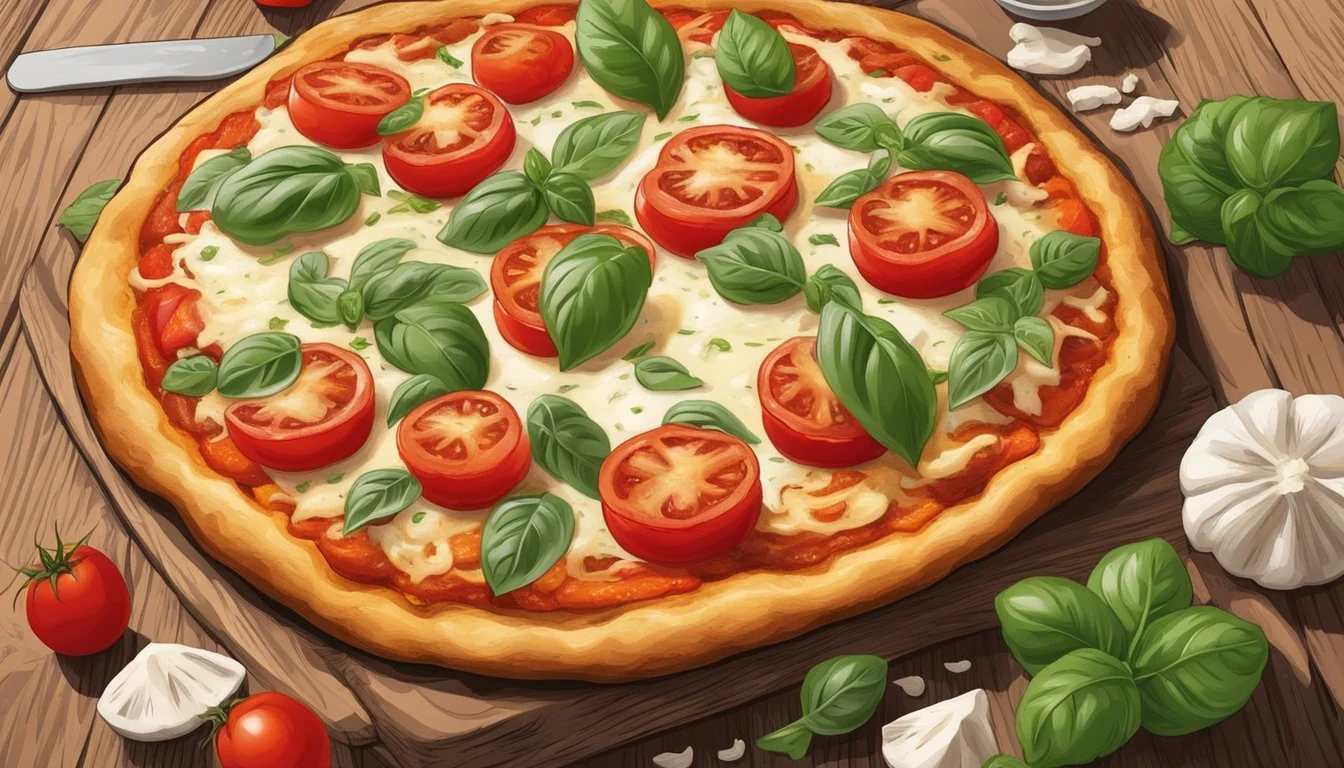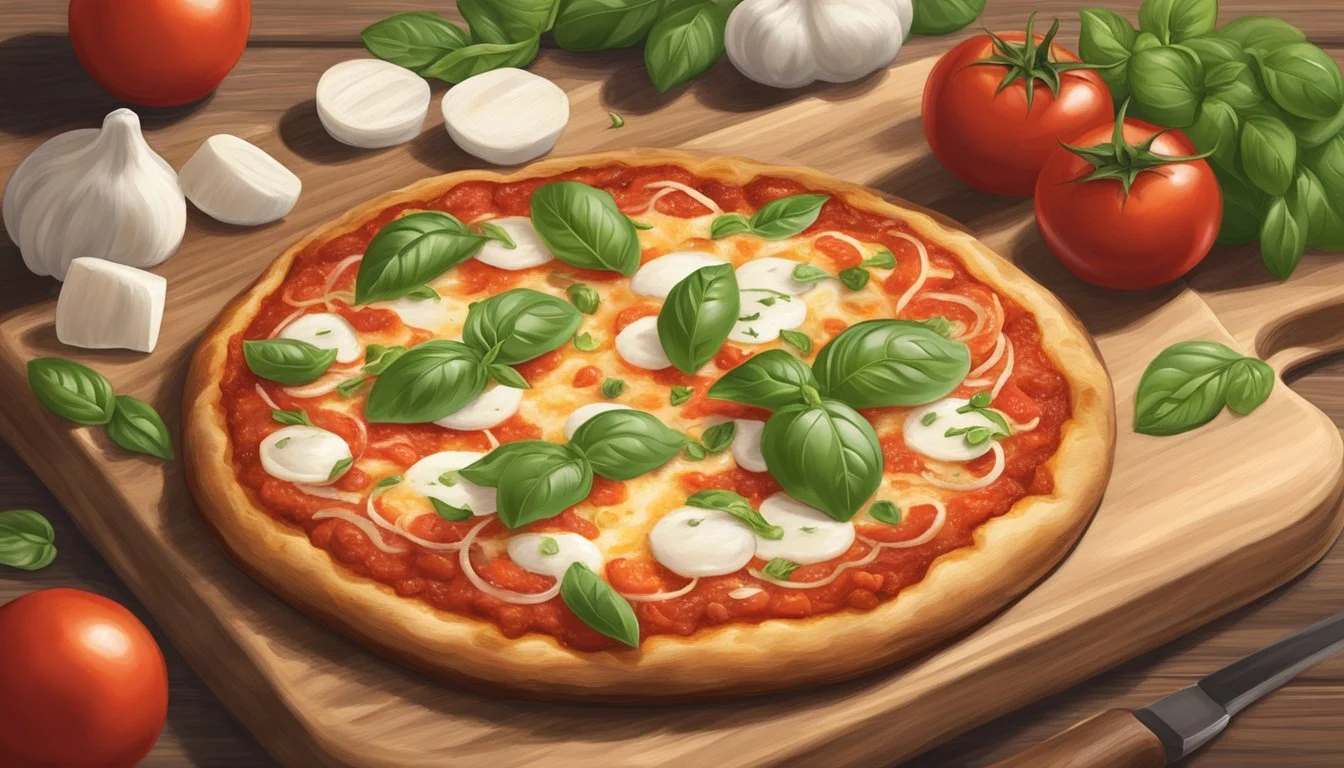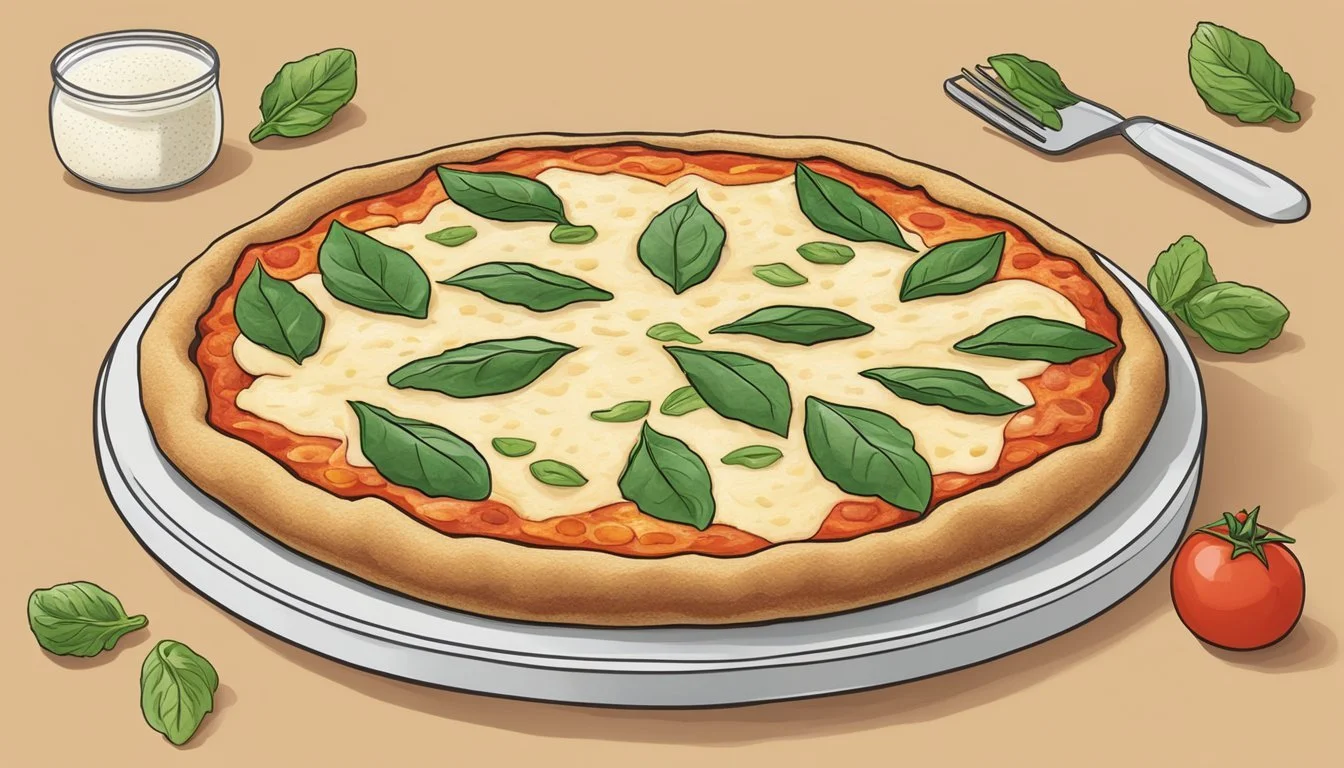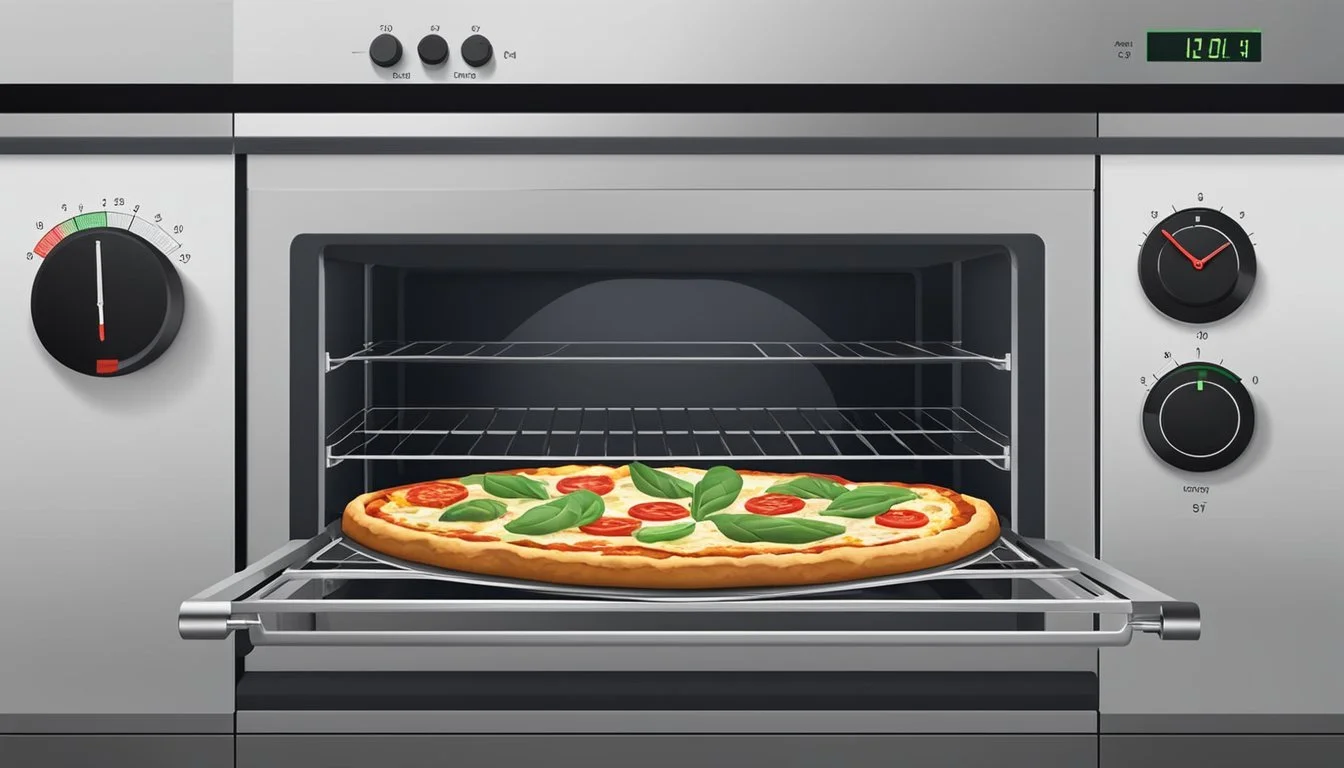How Long Does Cauliflower Crust Margherita Pizza Last?
Tips for Optimal Freshness
Cauliflower crust Margherita pizza has become a favorite among those looking for a healthier, gluten-free alternative to traditional pizza. This nutritious twist on a classic dish is not only delicious but also offers the benefit of being suitable for various dietary preferences. When stored correctly in the refrigerator, cauliflower crust Margherita pizza can last up to four days.
Understanding the proper storage methods is crucial for maintaining the freshness and flavor of the pizza. Ensuring the pizza is thoroughly cooled before placing it in an airtight container helps preserve its quality. Refrigeration significantly extends the shelf life compared to leaving it at room temperature.
For those who want to enjoy their pizza later, freezing is another option. After cooling, wrap individual slices in plastic wrap and place them in a freezer bag. Properly frozen, cauliflower crust Margherita pizza can last for up to two months, making it a convenient meal to have on hand for busy days.
Understanding Cauliflower Crust Margherita Pizza
Cauliflower Crust Margherita Pizza combines the unique texture of a vegetable-based crust with the classic flavors of Margherita toppings. This section explores both the foundation of the crust and the essential ingredients that make up this variant of a beloved Italian dish.
Composition of Cauliflower Pizza Crust
The crust is primarily made from cauliflower, which is pulsed in a food processor until it reaches a rice-like consistency. The riced cauliflower is typically blanched or microwaved to soften it, and then thoroughly drained to remove excess moisture.
Key Ingredients in the Crust:
Cauliflower
Eggs
Almonds
Parmesan cheese
Dried herbs, like oregano and basil
This base mixture is combined until well-blended and then shaped into a flat, circular crust before baking until it achieves a crisp texture. This process creates a gluten-free and low-carb alternative to traditional pizza crusts.
Key Ingredients in Margherita Pizza
The Margherita Pizza is known for its simple yet flavorful toppings. Fresh tomatoes, which can be pulsed to make a thick sauce, serve as the base. Garlic and olive oil are generally used to enhance the sauce's flavor.
Core Toppings:
Fresh mozzarella cheese
Fresh basil leaves
Olive oil
Tomato sauce made from fresh tomatoes
After spreading the fresh tomato sauce on the cauliflower crust, slices of fresh mozzarella are added. The final touch includes a sprinkling of fresh basil leaves and a drizzle of olive oil. This combination is both flavorful and visually appealing, maintaining the essence of traditional Margherita while embracing the benefits of a cauliflower-based crust.
Preparation Fundamentals
Cauliflower crust Margherita pizza requires careful preparation to achieve the perfect balance of texture and flavor. This section covers the key steps involved in creating the dough and assembling the pizza.
Creating the Dough
Start by preheating the oven to 400°F. This ensures the oven is ready once the dough is prepared.
Grate a medium-sized cauliflower head using a food processor until it resembles rice. Soak it in cool water, rinse under running water, and pat dry.
Ingredients:
4 cups of grated cauliflower
2 beaten eggs
1 cup grated mozzarella cheese
1/4 cup grated parmesan cheese
1 tsp oregano
1 tsp garlic powder
Salt and pepper to taste
Mix the ingredients until a soft dough forms. Place the dough on a parchment-lined baking sheet, shaping it into a circle. Spray lightly with cooking spray and bake for 20 minutes or until golden brown.
Assembling the Pizza
Once the crust is ready, prepare the toppings. Cook finely chopped garlic in olive oil for about 2 minutes. Add canned tomatoes, seasonings such as dried oregano and basil leaves, and simmer for 35 minutes to make the pizza sauce.
Top the baked crust with the sauce. Add shredded mozzarella cheese and freshly torn basil leaves. Optionally, add a sprinkle of black pepper and Italian seasoning to enhance the flavor profile.
Bake the assembled pizza at 425°F until the cheese melts and is golden brown, typically 12-15 minutes. Let it cool slightly before serving to ensure the crust holds together.
Optimal Cooking Techniques
Ensuring a crispy and flavorful cauliflower crust margherita pizza requires careful attention to baking methods and achieving the perfect crust texture. Below are critical techniques to optimize the cooking process.
Baking the Pizza
To start, preheat the oven to 400 °F. This guarantees that the temperature is consistent for baking. Line a baking sheet with parchment paper to prevent sticking. Form the cauliflower dough into a thin, even circle on the sheet. This step is crucial, as uneven thickness may cause parts of the crust to undercook.
A pizza stone can also be used for better heat distribution. After shaping the pizza, lightly coat it with cooking spray to enhance browning and crispiness. Bake for about 20 minutes or until the crust starts to appear golden brown. Avoid underbaking by keeping an eye on the edges to ensure they don't darken excessively.
Achieving a Golden Brown Crust
To obtain the desired golden brown crust, evenly spread the dough on the sheet pan or pizza stone. Baking at the right temperature is vital. 470°F can intensify browning if desired, as mentioned in techniques. This higher temperature encourages a more profound, golden hue and ensures the cauliflower crust becomes less soggy.
Using a thin layer of olive oil, or cooking spray contributes to this process. It’s recommended to use a combination of mozzarella and parmesan for the topping, as these cheeses melt well and promote browning. For a margherita pizza, adding fresh basil after baking retains its vibrant flavor and color, enhancing the overall result.
Storage Recommendations
To maintain the quality and safety of your cauliflower crust Margherita pizza, proper storage methods are crucial. Follow these guidelines for refrigerating and freezing to extend the pizza's shelf life while preserving its taste and texture.
Storing Freshly Baked Pizza
After baking, let the cauliflower crust pizza cool to room temperature. Avoid leaving it out for more than two hours to prevent bacterial growth.
Once cool, slice the pizza and wrap each piece tightly in plastic wrap or aluminum foil. Alternatively, use an airtight container.
Refrigerate the wrapped pizza for up to 4 days. Use a dish towel to further absorb any moisture, keeping the crust from becoming soggy.
Extending Shelf Life
To extend the shelf life of your Margherita pizza, freeze it. After cooling, wrap slices in plastic wrap and then in foil for an extra layer of protection.
Place the wrapped pizza in an airtight freezer bag. Label with the date and freeze for up to 2 months.
To reheat, defrost in the refrigerator overnight before warming in an oven or microwave.
This method retains firmness and texture, especially important for gluten-free crusts.
Reheating Instructions
Reheating cauliflower crust Margherita pizza helps restore its flavor and texture. Depending on the method, here are the steps to ensure a crispy crust and properly heated toppings.
Microwave Reheating
Microwave reheating is convenient but can make the crust less crispy.
Place the leftover pizza on a microwave-safe plate.
Cover it with a microwave-safe lid or another plate to keep the moisture in.
Microwave on medium power for 45-60 seconds. Check if it's heated thoroughly.
If needed, microwave in 15-second intervals until it's hot enough.
For better results, use a microwave crisper tray to keep the crust firm.
Oven Reheating
Reheating in the oven maintains the pizza’s crispness and evenly heats the toppings.
Preheat the oven to 375°F (190°C).
Place the pizza on a baking sheet lined with parchment paper.
Bake for approximately 10 minutes or until the cheese is bubbly and the crust is crispy.
For extra crispiness, finish by broiling the pizza for 1-2 minutes, keeping a close eye to avoid burning.
Remove from the oven and let it cool slightly before serving.
These methods offer flexibility and ensure your cauliflower crust Margherita pizza retains its quality after reheating.
Health and Dietary Considerations
Cauliflower crust Margherita pizza offers various health and dietary benefits, including nutritional advantages and suitability for gluten-free and low-carb diets.
Calories and Nutrition
Cauliflower crust Margherita pizza provides a lower-calorie alternative to traditional pizza.
Cauliflower: Rich in fiber and vitamins such as C and K.
Mozzarella: Offers protein and calcium.
Egg: Adds protein to the crust.
Parmesan: Enhances flavor with extra protein and calcium.
A slice typically has fewer carbohydrates. Cauliflower crust tends to be higher in protein and fiber compared to regular pizza crust.
Nutritional benefits:
Nutrient Typical Amount per Slice Calories 120-150 kcal Protein 6-8 grams Carbohydrates 5-7 grams Fiber 2-3 grams Fat 6-8 grams
This can vary based on the specific recipe, but overall, a cauliflower crust pizza provides a balanced nutritional profile suitable for various dietary needs.
Gluten-Free and Low-Carb Benefits
Many people seek gluten-free or low-carb options for dietary reasons, including celiac disease or keto diets.
Gluten-Free: Made with cauliflower, egg, and cheese, making it ideal for those avoiding gluten. The absence of wheat flour makes it a good choice for gluten-sensitive individuals.
Low-Carb: With fewer carbs than traditional crusts, cauliflower crust fits well into low-carb or ketogenic diets like keto. The low-carb nature helps manage blood sugar levels and supports weight loss efforts.
By choosing a cauliflower crust, pizza lovers can still enjoy their meals without compromising their dietary restrictions.
Customization Ideas
Explore delicious and inventive ways to customize your cauliflower crust Margherita pizza, from varied toppings to homemade sauce options, enhancing both flavor and nutritional value.
Toppings and Variations
A classic Margherita pizza features sliced tomatoes, fresh basil, and mozzarella cheese. To add variety, consider using Roma tomatoes for a richer taste. Fresh spinach and mushrooms can provide added nutrients and texture.
For a protein boost, bacon, ham, or pepperoni can be included. Vegetarians might enjoy zucchini, bell peppers, or broccoli for added crunch. Olives and goat cheese can elevate flavor with their distinct profiles.
Thyme and other fresh herbs like oregano can be sprinkled on top, offering a gourmet touch.
Homemade Sauce Options
Margherita pizza typically uses marinara sauce as a base. For a fresh twist, homemade sauces can make a significant difference. Pesto offers a vibrant, herbaceous alternative.
A simple olive oil and garlic mixture can be light and flavorful. Tomato and basil sauce is another great homemade option, simmering fresh tomatoes with garlic and basil.
For cheese lovers, a cheesy white sauce with a blend of mozzarella and Parmesan can be delightful. Each of these options provides unique flavors, ensuring your pizza remains fresh and exciting.









